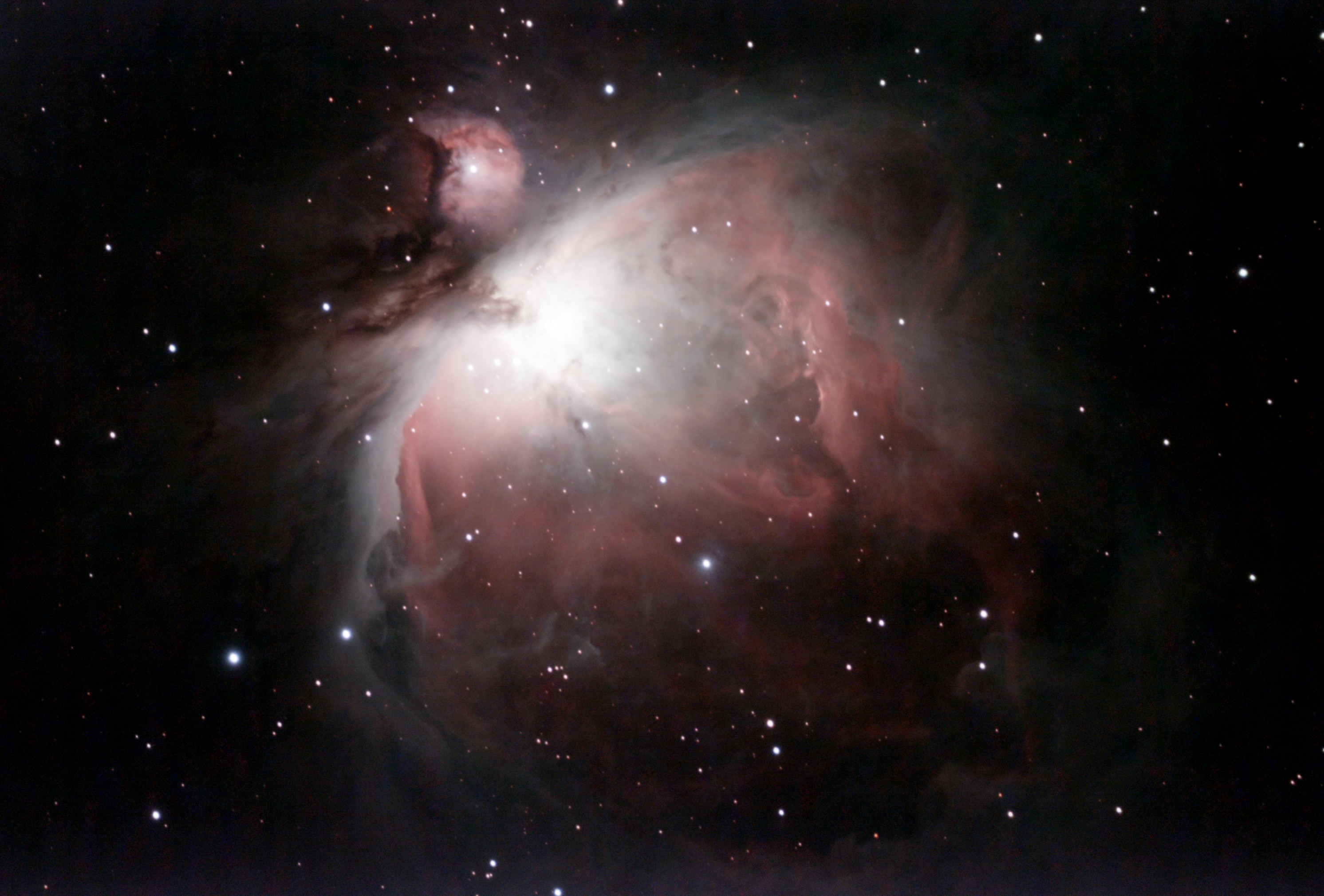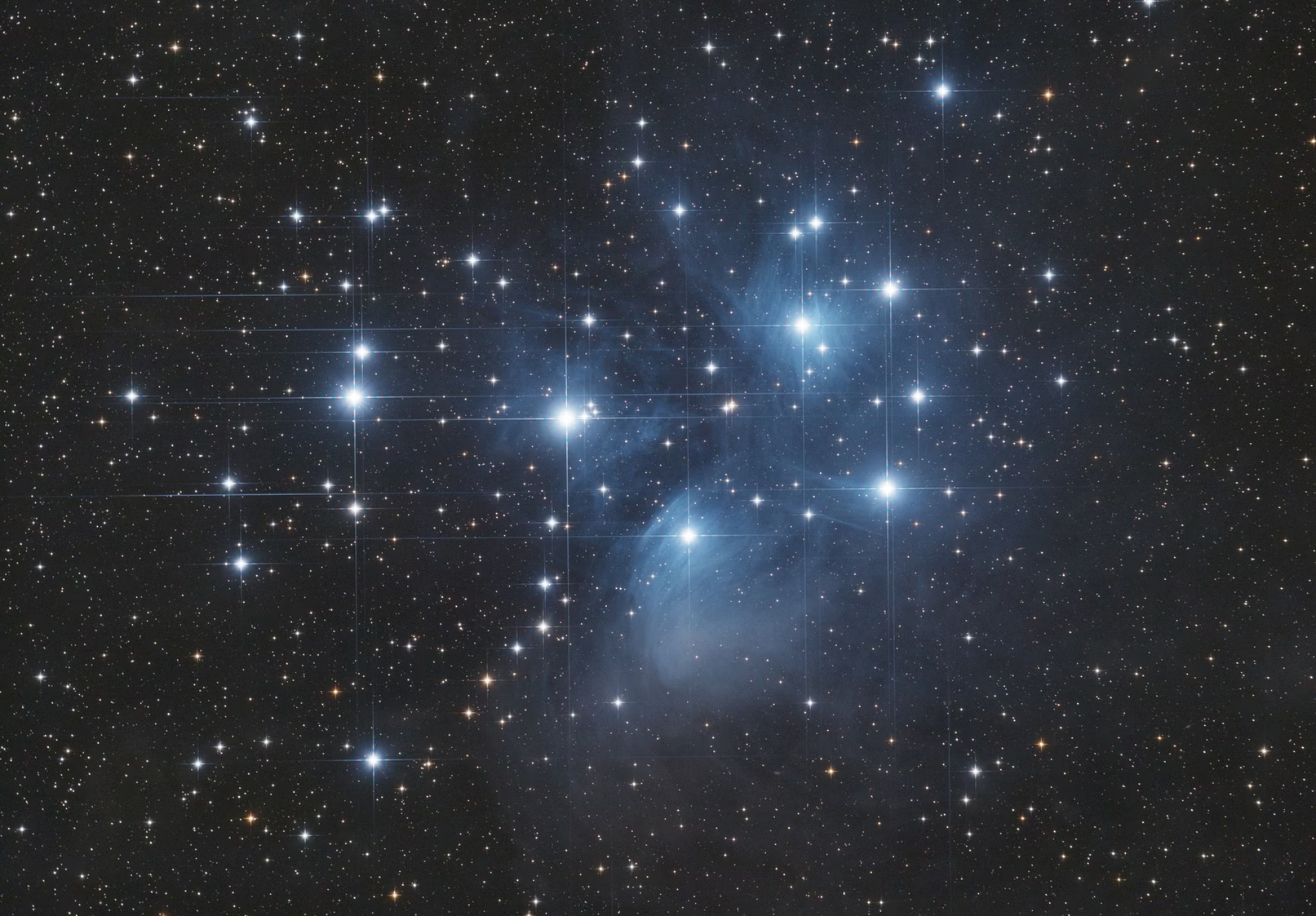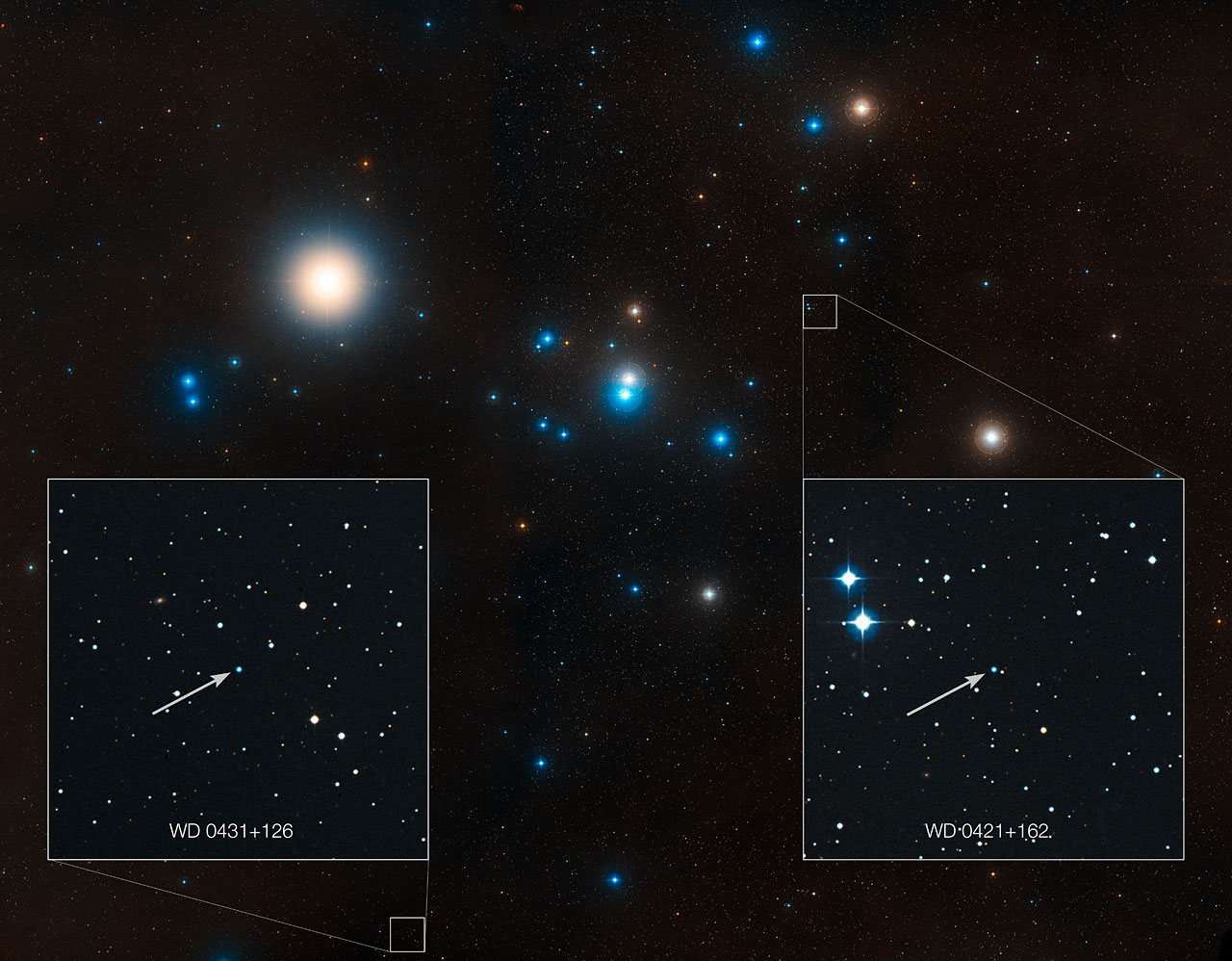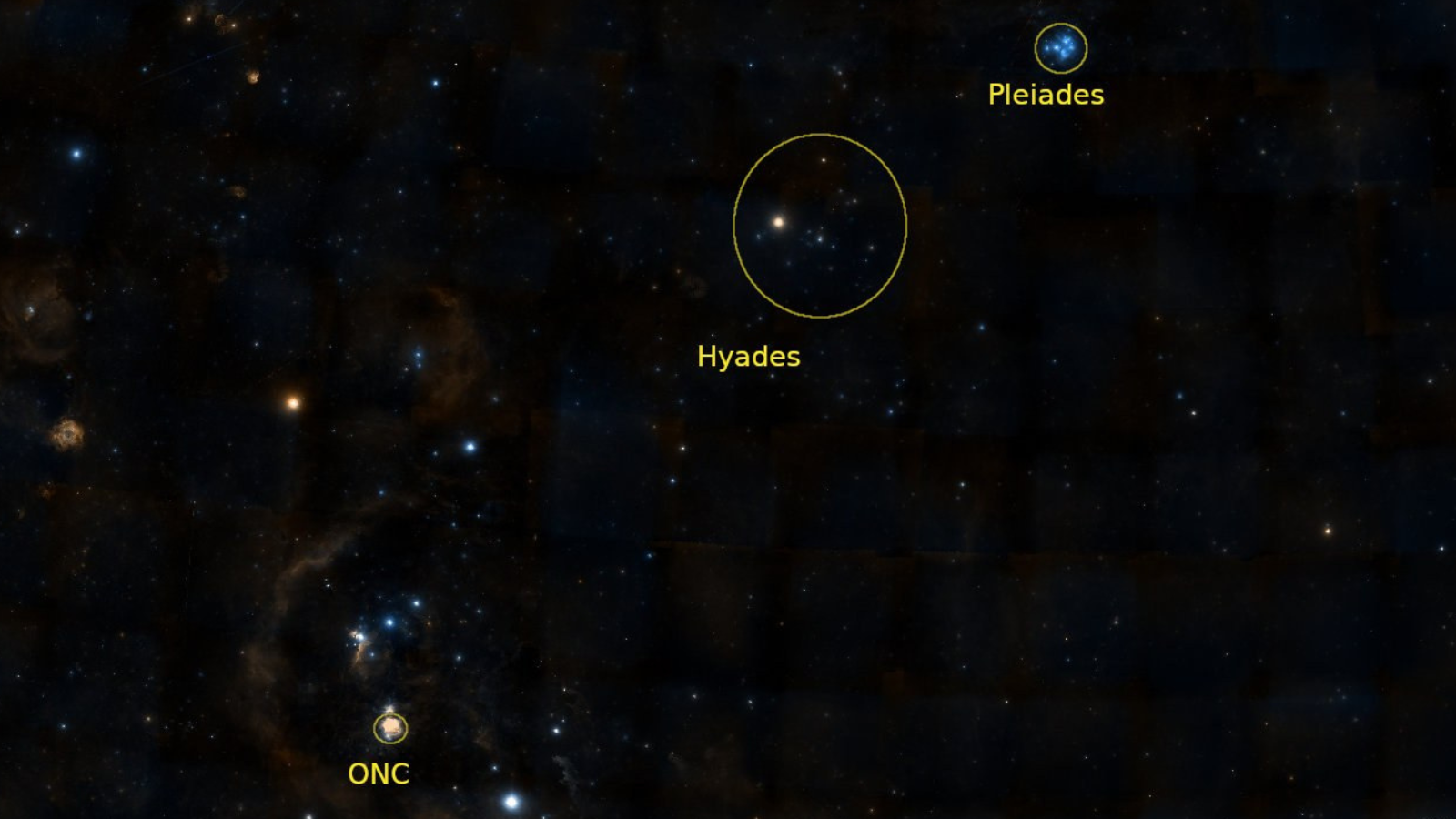Three of the most popular targets for astronomers of all skill levels are the Seven Sisters (the Pleiades), the Hyades and the Orion Nebula Cluster (ONC), which is the central "star" in Orion’s Sword.
Now, scientists have discovered that these celestial bodies may have more in common than once thought. The star clusters may share a common origin mechanism, they say, despite the fact that the three clusters are all different ages and are located at different distances from Earth.
This new research suggests looking at the three star clusters is like looking at three snapshots taken of the same person at three different stages of their life, from infancy to old age.
The youngest of these open clusters is the ONC at 2.5 million years old. Located around 1,350 light-years away and packed with thousands of young stars embedded in the stellar cloud that created them, it is one of the most active star-forming regions in the Milky Way.
Located 444 light-years from Earth, the Pleiades is less densely packed than the ONC, but it is much more ancient at 100 million years old. However, the Hyades, located 151 light-years away, has fewer stars that are even more thinly spread out and is around 700 million years old.
Yet, as diverse as these star clusters seem, the team's new research suggests they share a particular kind of ancestor.
"Our highly precise stellar dynamics calculations have now shown that all three star clusters originated from the same predecessor," team member and University of Bonn researcher Pavel Kroupa said in a statement.
Star clusters on the same cosmic family tree
The team compares the varied ages and conditions in these three star clusters to looking at the same human being through photos that document the stages of their life. The densely packed ONC is the baby, the more dispersed Pleiades is the adolescent, and the Hyades is the elderly person.
Though the three clusters didn't form from the same molecular cloud of dense gas and dust, they can be compared to the same person being born three times in different parts of the globe.

"From this, we can learn that open star clusters seem to have a preferred mode of star formation," Kroupa explained. "It appears that there is a preferred physical environment in which stars form when they evolve within these clouds."
The question is: How does a cluster like the ONC develop into one like Pleiades and then age into a cluster like the Hyades? Kroupa and colleagues, including team leader Ghasem Safaei from the Institute for Advanced Studies in Basic Sciences, set about answering this question with computer simulations.
Star clusters grow old gracefully
The team's simulations revealed the forces acting between stars in a cluster. This allowed the scientists to model the life cycle of such a collection of stars from a gas-rich, dense infancy through gradual expansion and gradual gas and star loss over the course of 800 million years.
The results obtained by the team closely reflected the changes in structure and composition between the phases we see exemplified by the ONC, the Pleiades and the Hyades.
"This research shows that it is entirely plausible that star clusters such as the ONC follow a development path that transforms them into systems like Pleiades and later on Hyades," Hosein Haghi, study team member and a researcher at the University of Bonn, said in the statement.

The team's results indicated that clusters like the ONC can lose up to 85% of their stellar population and yet hang on to coherent structures when they reach ages similar to that of the Hyades while passing through a stage that resembles the Pleiades.
The team's research also suggests that the fact these three clusters appear close together in the night sky over Earth, despite being widely separated in the cosmos, may be more than a mere coincidence. This positioning could, in fact, be related to the way star clusters form and evolve in relation to our galaxy.

"This research gives us a deeper understanding of how star clusters form and develop and illustrates the delicate balance between internal dynamics and external forces such as the gravitational pull of the Milky Way," team member Akram Hasani Zonoozi of the University of Bonn said in the statement.
Beyond the research's importance for our understanding of star clusters and their evolution, the team's work demonstrates the power of combining simulations with astronomical observations.
This research was published on Friday (July 18) in the journal Monthly Notices of the Royal Astronomical Society.

.jpg) 5 hours ago
1
5 hours ago
1

 English (US)
English (US)